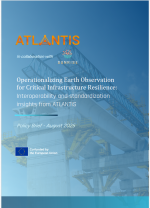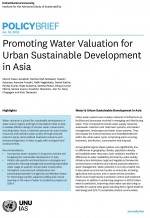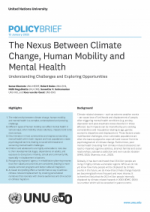Understanding Multifunctionality of Constructed Wetlands in Agricultural Settings in the European Region

Publication Date:
2024
Pages:
16
Item Reference:
PB-2024-01
Publisher:
UNU Institute on Comparative Regional Integration Studies
Publication Language:
EN
Copyright Year:
2024
Policy Brief Type:
Abstract:
- Environmental Benefits and Social Innovation: Environmental factors play a crucial role in the advantages of implementing Constructed Wetlands (CWs) in agriculture. Yet, fostering social innovation is the key to their successful use in farming.
- Constructed Wetlands as Nature-Based Solutions: CWs are natural solutions that could offer a wide range of benefits, but they also come with trade-offs that must be considered carefully and cautiously.
- Diverse CW Technologies for Specific Contexts: Various CW technologies exist, each tailored to specific purposes and more advantageous in particular settings and agricultural contexts. Also, it is crucial to assess ‘Long-Term Gains’ over immediate ‘Farm-Level Return of Investment (RoI)’ as quick returns on investment may be challenging to achieve at the farm level, the actual benefits are more likely to be realised at the landscape or catchment levels.
- Promoting CW Adoption with Subsidies: Implementing CWs’ social and environmental advantages can far outweigh the associated economic costs. Therefore, providing financial subsidies to farmers or groups could help establish CW as a promising strategy.
- Sustainability-focused Approach: A holistic perspective considering environmental, social, and economic dimensions of sustainability remains critical for making well-informed decisions that benefit society (farming community) and not just individuals. To facilitate sustainability, understanding is enabled through ‘serious gaming’, an effective tool designed by the Water Retention and Nutrient Recycling in Soils and Streams for Improved Agricultural Production (WATERAGRI) project to better comprehend challenges and opportunities associated with implementing technologies like CW toward sustainable farm management.





